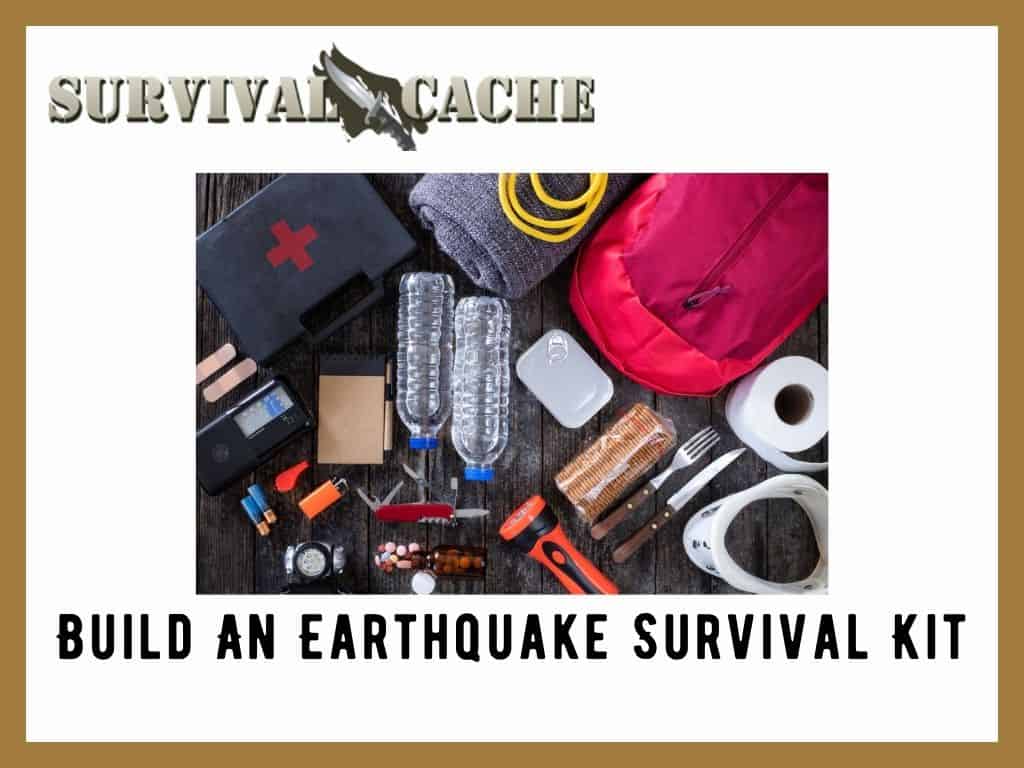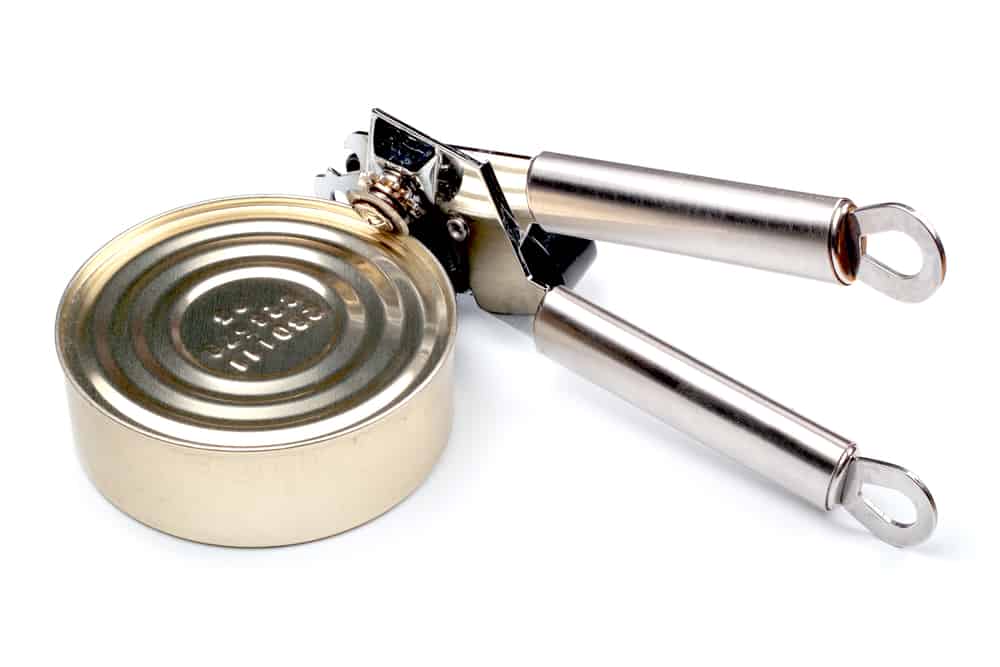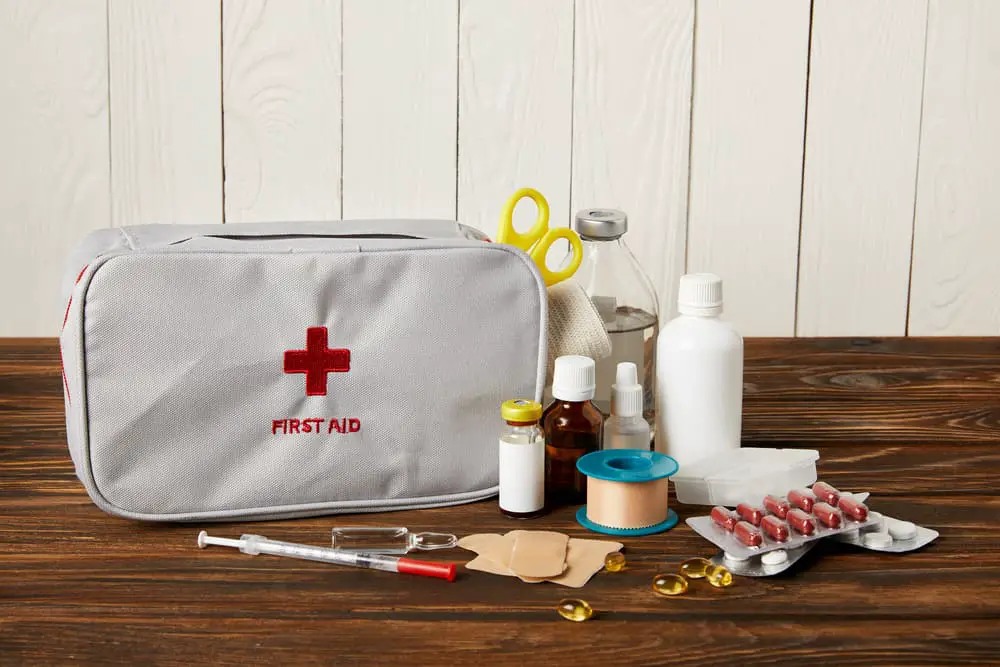According to the USGS, the largest earthquake ever recorded was in 1960 in the country of Chile. It registered at 9.6, killed over 1,500 people, rendered hundreds of thousands more homeless, and did over half a billion dollars in damage.

Like most natural disasters, the earthquake’s affects were not localized to Chile along.
The earthquake was so powerful that one side effect was a tsunami that reached Hawaii, Japan, and the Philippines. The takeaway here is that even if you do not live in a region prone to earthquakes, they can still affect you.
One source, The National Earthquake Information Center, estimates there are roughly 20,000 earthquakes every year worldwide.
That breaks down to 55 per day! However, depending on what source you read, these numbers can change quite a bit, but they only go up from here. Suffice to say, earthquakes happen a lot even though most occur without us even noticing them. But numbers like that it only makes sense to be as prepared as possible.
One of the best ways that you can be prepared if you live in a region prone to earthquakes, is to create an earthquake survival kit.
But what should go into the kit? And where should you keep it? To answer that, let’s get right into the heart of this article.
SKIP AHEAD
Building an Earthquake Survival Kit
Survival Kit Location
When it comes to survival supplies the old saying, “you shouldn’t keep all of your eggs in one basket,” always comes to mind.
Earthquakes can cause devastating localized damage, especially to standing structures. Having only one kit will limit your chances of being able to get to it.
Spreading supplies out between several locations within a home will increases your chances of reaching the supplies.
If there is a kit in the garage but that structure has collapsed, a secondary kit in the house can still be used.
When spreading kits out over different locations for this purpose, it is recommended that the contents of the kits remain uniform.
This means one kit should not contain all of your medical supplies while another kits contains all of your tools.
By dividing supplies evenly your health and safety will not become compromised just because one of your kits is inaccessible.
When it is possible, put a kit in your vehicle, garage, and several places around the house.
The Kit
Now that you have some ideas of where the kit should go, it is time to decide on what should into it.
Personalize
The first thing that anyone should do when creating a survival kit is to account for any special requirements among group members, this includes pets.
For example, any medical needs or a backup power supply for a medical device should be planed for.
Type of Container
Next, the type of container needs to be picked out.
There are many different kinds of containers and what you use is a personal choice as it depends on the amount of supplies being stored and your overall emergency plans.
However, there are two main options.
A pack or bag allows an individual to quickly and easily move supplies from one location to another. But considering that an earthquake easily shifts large heavy items around, a backpack is going to offer very little protection to the supplies inside.
A hard case or container, like a sturdy plastic tote or metal box, will protect the supplies more. But the downside to these containers is that they can be heavy and more difficult to move supplies from one location to the next.
Supplies
Locations have been chosen, personal requirements taken care of, and the container has been decided upon, it is now time to start gathering supplies.
Water

An earthquake can easily rupture water mains or take out power, which means no running water. One gallon of water per person per day is a good rule of thumb but this does not take into account water for cooking, cleaning and sanitation.
Since water is critical to life, we can only go three days without it, store as much clean water as you can.
Water Filters
Stored water can be compromised for several reasons that are caused by an earthquake. For example, a part of a structure could collapse and break open stored water containers.
Small, portable water filters are affordable, easy to use, and can filter hundreds to thousands of gallons of water
Since these filters hardly take up any space it would be advantageous to have several of them on hand. Examples of such filters would be Sawyer Mini Water Filter, and a Seychelle Water Bottle.
Food
As much as we do not like to think about it, the human body can actually go quite a while without eating, several weeks in fact.
But dealing with an earthquake ravaged environment is going to be strenuous both physically and mentally.
Keeping energy levels up by eating regular meals will help combat fatigue, headaches, mood swings, lack of mental focus, etc.
A large earthquake will certainly have an effect on utilities like gas, electric and water.
Because of this it would be best to have food items that do not require refrigeration and as little to no cooking as possible.
For the above reason, canned goods are always a great affordable option. Canned food is filling and can be eaten straight from the can without any cooking.
This leads me into the next item on the list.
Manual can openers

While some canned goods come with easy to open tab lids, not all do. If canned food is the source of emergency food then several manual can openers need to be available.
Plastic sheeting and duct tape
In the aftermath of a natural disaster, thick plastic sheeting and duct tape will serve a multitude of purposes. A few things they can be used for are:
- Temporary home repairs
- Impromptu shelters
- Sanitation needs
- Water collection
- Transporting supplies.
- Water proofing
One cannot have too much of either of these useful items.
Trash bags
Just like the above item, you really can’t have too many trash bags. Some of the ways they can be used are:
- Water collection
- Sanitation
- Signaling for help
- Improvised shelter
- Transporting and water proofing supplies
- Short term floatation device
When purchasing trash bags, thick heavy-duty bags should be bought.
Tools
Tools that should be added to this kit are:
- Pliers and a wrench for turning off utilities. Additionally the location of shut offs and how to turn them off should be known
- Crowbar or prybar for moving obstacles and other damaged items
First Aid

No kit is complete without first aid supplies. General first aid kits are good enough for the average person except for the amount of supplies they have.
Look at the contents of a first kit and bulk up on the quantity of items.
Dust Mask
Due to the nature of an earthquake, there is a good chance there will be a fair amount of dust in the air.
Dust will make it hard to breathe and can cause long term health problems. Make sure that there are multiple masks for everyone in your group.
PPE (Personal Protective Equipment)
To deal with debris and the dangers of damaged structures you are going to want some PPE in your kit. Items to consider are:
- Hardhat to protect against falling debris
- Reflective vest will make a person more visible
- Eye protection, always eye protection
- Knee and elbow pads to protect against scattered debris and should a person need to climb or crawl
- Thick work gloves to protect hands against rough and sharp debris
Radio
An emergency radio will provide pertinent warnings and updates when other sources of communications may be down.
A radio that is battery-powered, solar-powered, or a hand crank radio would be the best options to have.
Batteries
Most items that we use today require a source of power, like the radio listed above.
A healthy stash of batteries should be in every kit to run devices like radios and flashlights.
When buying batteries, always look for ones that have the longest expiration date on them.
Another option would be rechargeable batteries that can be recharged through a solar panel setup. For the purpose of this article I would stay away from docking ports that only work with a wall outlet because there is a good chance the power grid will be down.
Cell phone chargers

Many people keep their phone chargers in one location, such as on stand next to the bed. But what if that charger cannot be reached?
Phone chargers today are affordable enough that several of them can be purchased and should be placed in emergency kits.
Maps
Most people probably cannot remember the last time they used a physical map to figure out directions. Everyone relies on their phones for that.
But a phone may not be able to get a signal or perhaps it was damaged by some falling debris.
This is why it is always a good idea to have physical maps of the city and state that is lived. Don’t forget the compass!
Flashlight

Being stuck in the dark is not fun and can be downright dangerous.
A good quality flashlight is a must in any survival kit and headlamps are among the best choices because they can be used hands free.
Headlamps are affordable, easy to use and there really isn’t a reason not to have them in an emergency kit.
Emergency Whistle
The damage caused by natural disasters can easily trap a person within a structure.
Due to injury or the amount of debris between the trapped person and the outside, a human voice can be difficult to hear in this type of situation.
In this scenario, an emergency whistle makes for a great signaling device that can alert rescue teams to a trapped person’s location. Every group member should have an emergency whistle.
Wrapping It Up
As much as I hope a person does not have to experience an earthquake or its effects the likelihood of us going through a natural disaster in our lives, is very possible.
I urge everyone to please take the time to analyze natural events in your region and plan accordingly. Use the above article as a baseline for creating a kit that works for you, your family, and friends. Thank you for reading and stay prepared!

